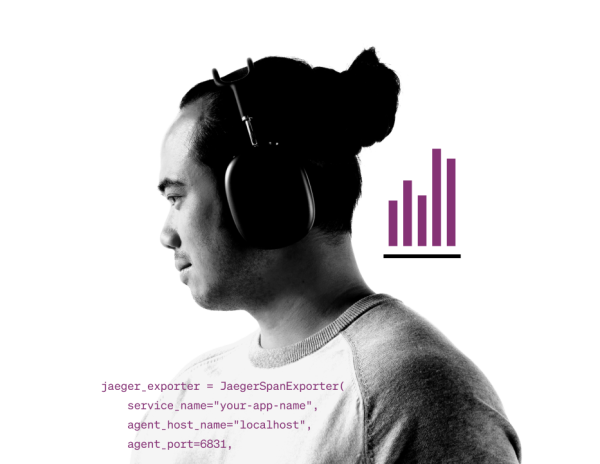Long the leader in enterprise technological advancement, North America has experienced economic headwinds over the last 12 months. As a result, North American organizations are looking for ways to maximize their cloud spend through tool consolidation, while insulating themselves against future security risks from cyber attacks.
Economic headwinds have made tool consolidation a top priority
Respondents surveyed in North America were the most likely to prefer a single, consolidated observability platform (61%), and 43% more likely than last year. However, 39% still used five or more tools for observability. While this is down from 73% in 2022, more work needs to be done, especially as organizations attempt to keep pace with rapid innovation and grapple with an unstable labor market and other economic challenges. Fortunately, 48% planned to consolidate tools next year to get the most value from their observability spend.
Observability is the linchpin of security
More than those in any other region, respondents surveyed in North America said an increased focus on security, governance, risk, and compliance was the top observability driver (58%). Most (81%) have deployed security monitoring. In addition, 38% improved the security and availability of apps, 37% identified and mitigated security risks earlier, and 37% said Security RX is a top observability benefit.
Observability directly drives positive business outcomes
Improved system uptime and reliability (44%) and increased operational efficiency (43%) were the most-cited observability benefits for North America. More than two-thirds (67%) said their mean time to resolution (MTTR) has improved by 50% or more since adopting observability. In addition, North American organizations realized a 2x return on their observability investment.
When we looked at the results for each country, we found that:
Canada 🇨🇦
Canada continues to display a high level of advocacy for observability. While more and more Canadian organizations are realizing the power and impact of observability on their bottom line, challenges remain. For example, tool consolidation has become a priority for those looking to maximize their spend in the face of rapid data growth.
in Canada had deployed 10+ observability capabilities
Security remains top of mind and technology strategy is shifting
The biggest driver of observability in Canada was once again an increased focus on security, governance, risk, and compliance (56%). Just 9% had not adopted DevSecOps in their observability practice, but 43% of those that had increased security at every stage of the software development lifecycle (SDLC), and 34% improved the security and availability of applications. Other top drivers included the development of cloud-native application architectures (48%) and migration to a multi-cloud environment (42%).
In addition, respondents surveyed in Canada were more likely to say observability is equally important for achieving core business goals and incident response/insurance this year (39% compared to 28% in 2022), which is a good thing as observability should benefit both areas. This trend reflects an increasing relationship/collaboration between technology teams and the business.
Tool fragmentation decreased, data fragmentation increased
More than half (55%) preferred a single, consolidated platform (44% more than last year) over multiple point solutions (19%). This preference was reflected in a decrease in the number of monitoring tools YoY—just 18% used seven or more tools compared to 46% in 2022—and an increase in those using just one tool (8% compared to none last year). However, only 16% learned about interruptions with one observability platform.
This year their telemetry data was more siloed (39%) than unified (35% compared to 57% in 2022). Less than a third said it’s unified in a single pane (30%) and that users broadly have access to telemetry data and visualizations (28%), even though 79% had deployed dashboards. Nearly a quarter cited siloed data (23%) and too many monitoring tools (22%) as primary barriers to achieving full-stack observability. To combat this and maximize the value of their investment, an impressive 57% planned to consolidate tools next year.
Observability leads to fewer outages, lower outage costs, and improved uptime
Outage frequency decreased year-over-year (YoY) for all business impact levels. Only 19% said high-business-impact outages happen once per week or more (47% less than last year). In addition, they detected those outages faster: only 36% took more than 30 minutes to detect them, which is 23% less YoY. And while it took them longer to resolve them (56% took more than 30 minutes compared to 47% last year), 67% said MTTR improved since adopting observability.
Nearly half (49%) of practitioners said observability helps them find and resolve issues faster. And more than a third said it increased operational efficiency (45%), mitigated service disruptions and business risk (36%), and improved system uptime and reliability (35%). All these improvements translated to one of the lowest outage costs of any country. More than half (51%) said critical business app outages cost their organization less than $250,000 per hour of downtime, and the median annual outage cost for Canada was $1.48 million.
Observability adoption is on the rise and providing business value
Despite having the lowest annual observability spend (57% said they spend less than $500,000 per year), observability adoption was high in Canada. About three in five (59%) had deployed 10 or more capabilities, and 43% had achieved full-stack observability (by the report’s definition). Security monitoring was the most deployed capability (86%), followed by database monitoring (81%), network monitoring (80%), and alerts (80%). They were also the most likely to have deployed infrastructure monitoring (79%). However, only 21% captured their telemetry data across the full tech stack.
Their investment is paying off. While only 38% said they receive at least $500,000 in total value per year from it, they realized a 2x ROI. About a third said observability improves revenue retention (35%) and creates revenue-generating use cases (30%). In addition, nearly half of IT decision makers (ITDMs) said it improves their life the most by making their job easier (46%) and helps achieve technical key performance indicators (KPIs) (46%) and establish a technology strategy (43%).
United States 🇺🇸
The United States (US) was focused on mitigating the growing risk of cyber threats and improving the customer experience. US organizations were also grappling with cost concerns. There was also a marked shift toward a more balanced view of the purpose of observability being equally important for achieving core business goals and incident response/insurance this year. This trend reflects an increasing relationship/collaboration between technology teams and the business.
in the US experienced improved MTTR since adopting observability
Observability adoption is widespread and primarily driven by security
In general, observability adoption in the US increased YoY. Most (88%) had deployed five or more capabilities (compared to 82% last year), including 39% that had deployed 10 or more. Although only 32% had achieved full-stack observability (by the report’s definition), and just 22% said they capture their telemetry data across the full tech stack. The primary driver of adoption by a wide margin was an increased focus on security, governance, risk, and compliance (59%), followed by the development of cloud-native application architectures (36%) and an increased focus on customer experience management (35%). In fact, the majority (80%) had already deployed security monitoring, representing a 41% increase YoY. Just 7% said their organization had not adopted DevSecOps in their observability practice.
More than three-quarters had also deployed network monitoring (82%), infrastructure monitoring (78%), and alerts (77%). Notably, US organizations were the least likely to have deployed distributed tracing (21%) and machine learning (ML) model performance monitoring (19%), and the most likely to say they have no plans to deploy them (26% and 22% respectively). They were also less likely to deploy synthetic monitoring (16%) and more likely to have no plans to deploy it (26%).
Observability cost is a concern but worth the investment
The top barriers to achieving full-stack observability were cost and a lack of budget (both 26% and more than last year). More than a third (34%) said rapid data growth significantly impacted their bill last year, and 24% had to pay for unwanted bundles to get the capabilities they need. US organizations were more likely to spend less than $500,000 per year on observability (52% compared to 34% that spent more than $500,000). And 29% planned to reduce spending across the board next year to maximize their observability spend.
Despite only 35% saying they receive at least $500,000 per year in total value from their observability investment, the data shows that it provides significant business value. The median annual ROI for the US was 100%, which means they received a 2x annual return on their observability investment. And about a quarter said it improves revenue retention and that they’d experience a significant business outcome without observability, including higher operation costs due to increased operational effort, revenue loss due to increased downtime, and reputation loss due to a worsened customer experience. In addition, 39% of ITDMs said it makes their job easier, and about a third said it helps achieve business and technical KPIs and establish a technology strategy.
Tool consolidation remains a priority but siloed data prevails
In general, US organizations were using fewer monitoring tools this year. Just over a third (38%) used five or more monitoring tools, which is 48% less than last year. Nearly half (48%) used four tools or fewer. This tool consolidation aligns with their increased preference for a single, consolidated platform (63%, which is 46% more than last year) over multiple point solutions (19%, which is 46% less than last year). Despite this clear preference for a single platform and that 24% said too many monitoring tools is a barrier to achieving full-stack observability, only 7% were using just one tool (although that’s more than double last year’s proportion). Plus, 46% planned to consolidate tools next year to get the most value from their observability spend.
However, this year 89% more respondents said their telemetry data was more siloed (44%) than unified (31%), despite 23% saying siloed data is a primary barrier to achieving full-stack observability. Only 26% said it’s unified in a single pane, and just 20% said users broadly have access to telemetry data and visualizations, despite the fact that dashboard deployment increased by 57% to 72% YoY.
Uptime is improving thanks to observability
Outage frequency was lower generally YoY across all business impact levels. Notably, US organizations experienced fewer high-business-impact outages than any other country: just 18% experienced them once a week or more compared to 76% that experienced them two to three times per month or fewer. They were also the most likely to detect those outages in less than 30 minutes (62%) than last year and other countries. Although 57% said it takes them more than 30 minutes to resolve them, including 31% who said it takes them more than 60 minutes, the proportion decreased 10% YoY.
In fact, 67% said their MTTR improved since adopting observability. More than half (51%) of practitioners said it helps them find and resolve issues faster. Nearly half said improved system uptime and reliability (47%) and increased operational efficiency (43%) are primary benefits enabled by observability. And 37% said it mitigates service disruptions and business risk. This is likely why the US had the lowest outage cost of any other country: half said they spend less than $250,000 per hour of downtime for critical business app outages. So the median annual outage cost was $1.2 million for the US.

